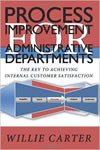The Garibaldi Group is a accounting firm that takes accounting and financial management to a new level of responsiveness.
Providing a full range of traditional as well as non-traditional services, this boutique firm focuses on the closely held businesses that are the backbone of our nation. The Garibaldi Group lives by two rules...A commitment to excellence and a passion for accounting.
The complexities of accounting, compliance and the twists and turns of the financial markets is a full time job that requires specialized expertise and professional vigilance. We are committed to providing the best possible service, expertise and experience to help companies and individuals achieve their goals. With our accounting acumen and our desire for professionalism being our first and foremost value, we always try to help each client with a level of responsiveness they deserve.
The Garibaldi Group helps ensure that businesses comply with all current accounting regulations and trends in the financial markets that may affect them.
Consulting Services:
- Accounting, Auditing, and Consulting for Small to Mid-Sized Closely Held Businesses and Professional Practices
- Business and Professional Practice Valuations
- Forensic Accounting Fraud Engagements and Expert Witness Testimony
- Tax Planning and Compliance
- Private Wealth Management
- Business, Financial, and Estate Planning

Founder of The Garibaldi Group and one of the industry's leading law firm services experts,
Michael J. Garibaldi, CPA, ABV, CFF, CGMA, has a strong background providing efficient and affordable solutions to complex matters of finance.
A
Certified Public Accountant licensed by the State of New York, Mr. Garibaldi is Accredited in
Business Valuation (ABV), and Certified in
Financial Forensics (CFF) by the American Institute of Certified Public Accountants (AICPA). He is recognized as a Chartered Global Management Accountant by the Association of International Certified Professional Accountants.
Mr. Garibaldi works closely with law firms and other professional service firms, manufacturing, wholesale/retail, medical, technology, restaurant/hospitality, artists and galleries, construction, and real estate clients where he is responsible for providing accounting, tax planning management consulting services, and financial reporting.
Michael Garibaldi is a Candidate Member of the American Society of Appraisers (ASA), Member of the Institute of Business Appraisers (IBA), the Association of Certified Fraud Examiners, the American Society of Appraisers (ASA), the AICPA and the NYSSCPA. He is a past President and former member of the Board of Directors of the NYSSCPA Nassau Chapter, and has held a variety of positions on the Litigation Support Committee of the Nassau County and State Chapters of the NYSSCPA. Mr. Garibaldi has also held a number of positions on other committees and sub-committees within these organizations.
View Michael J. Garibaldi's Expert Witness Profile.
By: Michael Garibaldi, CPA, ABV, CFF, CGMA
Most lawyers know how big a problem occupational fraud is in corporate America. They may even count as clients companies that have been defrauded and suffered significant losses. Yet a "not at my firm" attitude persists among many partners who take for granted the honesty and integrity of their colleagues and staff.
By: Michael J. Garibaldi CPA, ABV, CFF, CGMA
When a dishonest CFO or controller cooks the books, it can be devastating for the victim organization. In addition to direct financial losses, financial statement frauds erode trust between management and other stakeholders, including lenders, investors and employees who own company stock. Unfortunately, it's common for smaller companies to associate financial misstatement with large public companies that focus heavily on earnings per share.
By: Michael J. Garibaldi CPA, ABV, CFF, CGMA
It may be detrimental to an expert witness's credibility if even the appearance of a lack of independence exists. In today's legal environment, discrediting an expert based on his or her relationship with counsel, the client or the judge is common. Let's examine how to identify an expert's independence.
By: Michael J. Garibaldi CPA, ABV, CFF, CGMA
There are many more purposes for which valuations are used. Each has its unique presumptions. It must be understood that there is no one value and that the same investment can have a different value to different people and for different reasons. Each valuator must analyze such differences, understand the presumptions inherent in the purpose for which the valuation is to be used, and select and implement a method to determine proper value for the purpose.
By: Michael J. Garibaldi CPA, ABV, CFF, CGMA
When a client voiced strong suspicions that her soon-to-be ex-husband was hiding assets, her attorney investigated the claim but found nothing amiss. However, he hired a forensic accounting expert to help ensure his client would receive an equitable share of the marital estate. The expert turned up a trunkload of hidden treasure - undeclared cash income and property "stashed" under the names of the husband's mother and siblings.
By: Michael J. Garibaldi CPA, ABV, CFF, CGMA
Goodwill can be a significant asset for a professional practice. It may include both "personal" goodwill that's attributable to individual owners and "business" goodwill that can be transferred to third parties. When accountants and other types of professionals divorce, the amount of goodwill to include in the marital estate can become contentious (and may vary depending on state law). If expert testimony on the issue is inadequate, a court might look elsewhere for help, as it did in a recent Texas divorce case, Hill v. Hill.














 Founder of The Garibaldi Group and one of the industry's leading law firm services experts, Michael J. Garibaldi, CPA, ABV, CFF, CGMA, has a strong background providing efficient and affordable solutions to complex matters of finance.
Founder of The Garibaldi Group and one of the industry's leading law firm services experts, Michael J. Garibaldi, CPA, ABV, CFF, CGMA, has a strong background providing efficient and affordable solutions to complex matters of finance.
 J. Mason Bump, Founder, is a Blockchain Architectureand Cryptocurrency Expert. An early adopter of decentralized technologies, he has extensive business acumen and deep knowledge of blockchain technology, tokenomics, and public policy. Mason holds a JD and MBA, is a Certified Cryptocurrency Forensic Investigator, and is Certified by the Blockchain Council as both a Blockchain and Law Professional and a Certified Blockchain Expert.
J. Mason Bump, Founder, is a Blockchain Architectureand Cryptocurrency Expert. An early adopter of decentralized technologies, he has extensive business acumen and deep knowledge of blockchain technology, tokenomics, and public policy. Mason holds a JD and MBA, is a Certified Cryptocurrency Forensic Investigator, and is Certified by the Blockchain Council as both a Blockchain and Law Professional and a Certified Blockchain Expert.  Dr. John R. Black, President, has over 30 years of experience including International Humanitarian Assistance and Disaster Relief (HA/DR), DoD Joint Technology Research Evaluation and Development, and the extraction of practical insight from Intelligence in support of Strategic Decision-making.
Dr. John R. Black, President, has over 30 years of experience including International Humanitarian Assistance and Disaster Relief (HA/DR), DoD Joint Technology Research Evaluation and Development, and the extraction of practical insight from Intelligence in support of Strategic Decision-making. 

